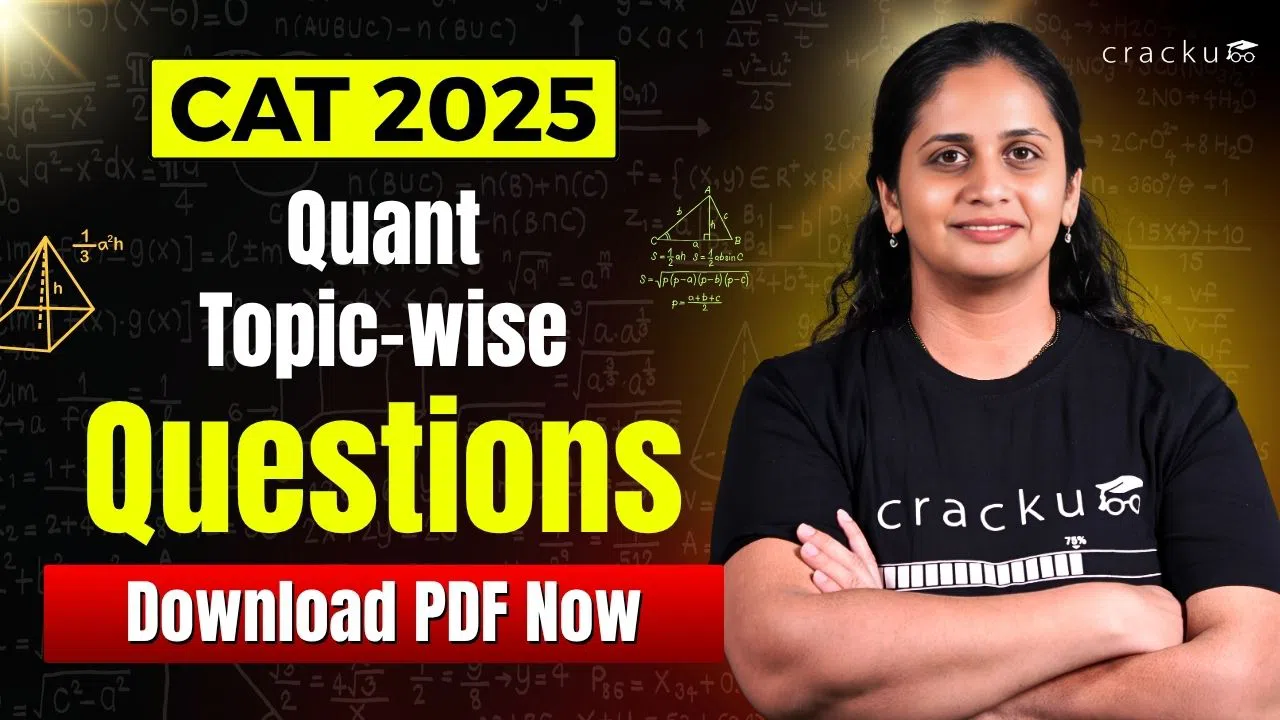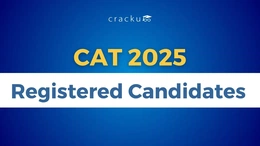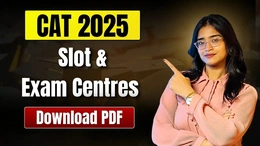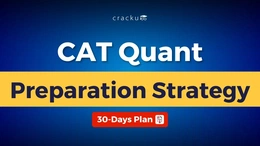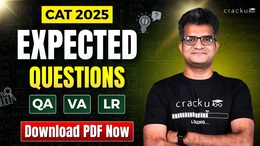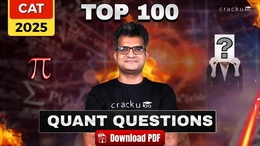CAT 2025 Quant Topic-wise Questions PDF: Preparing for CAT 2025 Quant section can feel overwhelming, but the right strategy and study material can make it simpler. One of the best ways to get ahead is by practicing most expected CAT quant topic-wise questions. These are questions carefully selected based on previous year trends, common patterns, and concepts that frequently appear in CAT exam.
One of the smartest ways to improve in the Quant section of CAT 2025 Syllabus is by solving questions from each topic separately. The CAT most expected questions are picked based on previous year trends and commonly repeated concepts in the exam.
In this blog, you'll get a free CAT Quant topic-wise questions PDF, a list of important formulas, topic-wise weightage details, and an easy-to-follow strategy to help you to improve your Quant score.
Also Read, 100+ CAT 2025 Quant Expected Questions PDF with Video Solutions
Free CAT Quant Topic-wise Questions PDF
We’re giving you a free CAT Quant topic-wise questions PDF with all the key topics for CAT 2025 like Arithmetic, Algebra, Geometry, Number Systems, and more. Each topic includes easy to hard questions with clear solutions to help you practice and improve step by step.
CAT Quant Topic-wise Formula PDF
The CAT Quant section relies heavily on formulas, and even small errors can cost marks. To help, we’ve made a CAT Quant formula PDF covering key topics like Arithmetic, Algebra, Geometry, Logarithms, and Probability. It’s perfect for quick daily revision, mock tests, or even to print and keep by your study table.
Also Read, CAT Quant Questions, 3000+ Quantitative Aptitude Questions
CAT Quant Important Topics 2025
At Cracku, we have analyzed the topic-wise weightage of past CAT previous year papers, and some areas clearly carry more importance. Here’s a simple breakdown of the CAT Important topics and how often they appear, so you know exactly where to focus your efforts.
| Topic | Observed Frequency / Slot-wise Count (Recent Years) | Importance & Strategy |
|---|---|---|
| Averages, Ratio & Proportion | 5, 4, 3 in successive slots | One of the most stable and high‑yield topics. Practice mixture & ratio, age, weighted averages. |
| Profit, Loss & Interest | 2, 2, 3 | Frequently tested. Includes simple & compound interest, profit margin, discount, etc. |
| Time, Work & Distance | 2, 2, 2 | A regular topic. Include work and pipe combinations, time and speed, etc. |
| Geometry & Mensuration | 2, 3, 3 | Often asked. Focus on triangles, circles, coordinate geometry, area & volume. |
| Number Systems | 3, 2, 3 | Core topic. Divisibility, remainders, factors, primes. |
| Logarithms, Surds & Indices | 2, 2, 3 | Appear reliably. Be comfortable manipulating exponents. |
| Inequalities & Linear Equations | 1, 2, 2 | Important for solving bounds, feasibility type questions. |
| Quadratic Equations / Polynomials | 2, 2, 0 | Common but slightly less frequent in some slots. |
| Progressions & Series | 2, 1, 1 | Occasionally tested; arithmetic / geometric series, sums. |
| Functions & Graphs | 1, 1, 2 | Useful especially in combination with other topics. |
| Permutation & Combination and Probability | 0, 1, 0 | Less frequent but high return when asked. |
Key takeaways:
-
The topics Averages / Ratio / Proportion, Profit & Interest, Geometry, and Number Systems have shown consistent presence in past CATs.
-
Logarithms / Surds / Indices and Time / Work / Distance are also reliably tested and should not be ignored.
-
Topics like Permutation & Combination / Probability may appear less frequently, but they can differentiate high scorers.
Use this weightage insight to prioritize your study schedule: allocate more time to high frequency topics first, then gradually cover medium and low frequency ones.
Also Read, CAT Quant Study Material 2025, Practice Questions, Mock Tests
CAT Quant Preparation Strategy 2025
Cracking the quant section in CAT 2025 isn’t just about solving hundreds of CAT questions, it’s about solving the right questions the right way. Here’s a practical and effective CAT Quant preparation strategy you can follow:
Know the Syllabus Well: List all topics and focus first on easy and frequently asked ones like Arithmetic.
Clear Your Basics: Strengthen fundamentals before moving to advanced-level questions.
Practice Topic-wise: Use the topic-wise PDF and spend 1–2 days on each topic before mixing them.
Practice with a Timer: Solve questions in limited time to improve speed and handle exam pressure.
Take Sectional Tests: Attempt weekly quant tests, check mistakes, and work on weak areas.
Revise Formulas Often: Review the formula sheet every 2–3 days to keep everything fresh in memory.
CAT 2025 Quant Topic-wise Questions: Conclusion
Preparing for CAT 2025 Quant becomes much simpler when you use the right resources like topic-wise questions, formula PDFs, and a clear study plan. Practicing the most expected questions will improve your problem-solving skills and help you focus on the topics that are asked most often. Keeping a handy formula sheet makes revision faster and helps you avoid mistakes in timed practice.
The secret to success is consistency. Spend a little time every day practicing questions, revising formulas, and analyzing mock tests. Start with high-weightage topics such as Arithmetic, Algebra, and Geometry, then move on to the remaining areas. With regular practice, smart revision, and a focused strategy, you can master the CAT 2025 Quant section and boost your overall score.
